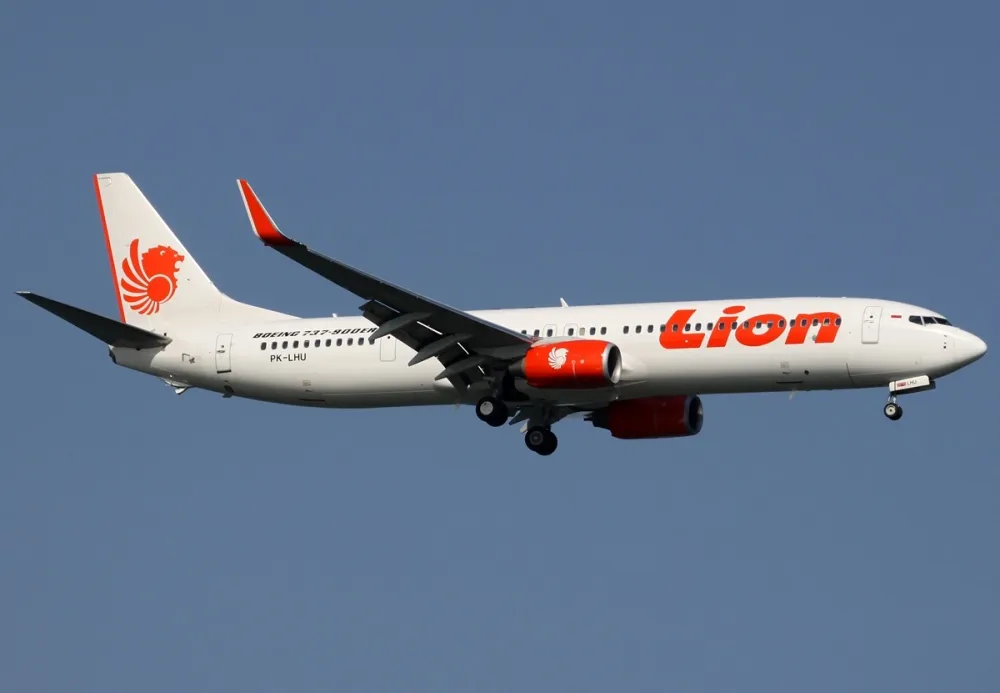
New theory in Lion Air disaster
Oct 30, 2018

Recent discussions surrounding the Lion Air disaster have introduced a new theory suggesting that a combination of human error and mechanical failures may have contributed to the tragic crash. Investigators are examining the role of the aircraft's automated systems, particularly the Maneuvering Characteristics Augmentation System (MCAS), which could have malfunctioned and misled pilots. Additionally, the theory posits that inadequate training and communication among the flight crew may have hindered their ability to respond effectively to the emergency. This perspective highlights the complexity of the event and underscores the importance of addressing both technical and human factors in aviation safety.
The Lion Air disaster, which occurred in October 2018, has remained a topic of investigation and discussion in aviation circles. A new theory has emerged regarding the causes of this tragic incident, shedding light on the complexities of modern aviation technology and pilot training. This article delves into the details of this new theory, examining its implications and the key factors that contributed to the crash.
Understanding the New Theory
Recent investigations have pointed to the "MCAS (Maneuvering Characteristics Augmentation System)" as a critical element in the Lion Air disaster. The new theory suggests that a combination of faulty sensor data and inadequate pilot training led to a situation where the aircraft's automated systems could not be effectively overridden by the pilots. This combination of technological failure and human error is central to understanding what went wrong.
Key Contributing Factors
The new theory highlights several key contributing factors that played a significant role in the disaster. These can be categorized into three main areas: "pilot training", "technical failures", and "organizational culture".
Pilot Training
One of the most crucial aspects of the new theory emphasizes the importance of thorough "pilot training". Investigators found that pilots operating the Lion Air flight had not received sufficient training on the MCAS system. The lack of comprehensive training on how to handle malfunctions of this automated system contributed to the pilots' inability to regain control of the aircraft. As a result, the new theory advocates for more robust training protocols that address the nuances of automated systems in modern aircraft.
Technical Failures
Another significant element of the new theory revolves around "technical failures" associated with the aircraft's systems. In the case of Lion Air, a malfunctioning angle-of-attack sensor provided erroneous data to the MCAS. This led to repeated automatic nose-down commands, which the pilots struggled to counteract. The new theory posits that this failure was not an isolated incident but indicative of a broader issue within the aircraft's design and maintenance practices. Tables showing maintenance records and sensor performance could provide visual context to these claims.
Organizational Culture
The organizational culture at Lion Air has also come under scrutiny in light of the new theory. Reports indicate that there was a "culture of complacency" within the airline concerning safety protocols and maintenance schedules. This culture may have contributed to the inadequate training and oversight that ultimately impacted the flight crew's ability to respond effectively in a crisis.
Implications for Aviation Safety
The implications of this new theory extend far beyond the Lion Air disaster itself. It raises essential questions about the "safety measures" in place across the aviation industry. As aircraft become increasingly reliant on automated systems, it is crucial to ensure that pilots receive the necessary training to manage these technologies. Furthermore, the industry must prioritize a culture of safety that encourages transparency and accountability.
Recommendations for the Future
Based on the insights gained from this new theory, several recommendations can be made to improve aviation safety:
- Enhanced Pilot Training: Airlines should implement comprehensive training programs that focus on automated systems and emergency procedures, ensuring that pilots are well-prepared for potential malfunctions.
- Regular Maintenance Checks: Establishing rigorous maintenance protocols and regular checks on critical systems can help identify issues before they lead to catastrophic failures.
- Promoting a Safety Culture: Airlines must foster an organizational culture that prioritizes safety, encouraging open communication about safety concerns without fear of retribution.
Conclusion
The new theory surrounding the Lion Air disaster offers valuable insights that could shape the future of aviation safety. By addressing the key factors of "pilot training", "technical failures", and "organizational culture", the aviation industry can work towards preventing similar tragedies in the future. As technology continues to evolve, it is imperative that safety remains at the forefront of all operational practices.
In summary, the Lion Air disaster serves as a poignant reminder of the complexities involved in modern aviation. The new theory provides a framework for understanding the interplay between technology and human factors, emphasizing the need for ongoing improvements in training and safety protocols.
As we move forward, it is critical that the lessons learned from this tragedy lead to actionable changes that enhance the safety and reliability of air travel for all passengers.
Related Articles

Explore Thailand: The Best Islands to Visit for Paradise, Adventure, and Relaxation

The Ultimate Guide to the Best Islands in Thailand for Your Next Getaway

Do babies need passports? How to get a passport for a newborn

How to get a U.S. passport fast: here’s how to expedite the process

What is Mobile Passport Control: 5 reasons why you should use it

SENTRI vs. Global Entry: A detailed guide

Do you need a passport to go to the Bahamas? Let’s find out

Do you need a passport to go to Mexico? A detailed guide

Do you need a passport to go to Canada? We got the answer

Do You Need a Passport for a Cruise: An Essential Travel Guide

Booster Seat Requirements: All the Rules to Follow in Your Rental Car

What Are the World’s Most Powerful Passports, and How Does Yours Rank?

How to Take a Passport Photo at Home: A Helpful Guide

You've got to have heart! Southwest's new livery

Your opinion: Should water be free on low cost carriers?

Young women bolder than guys as solo travellers
